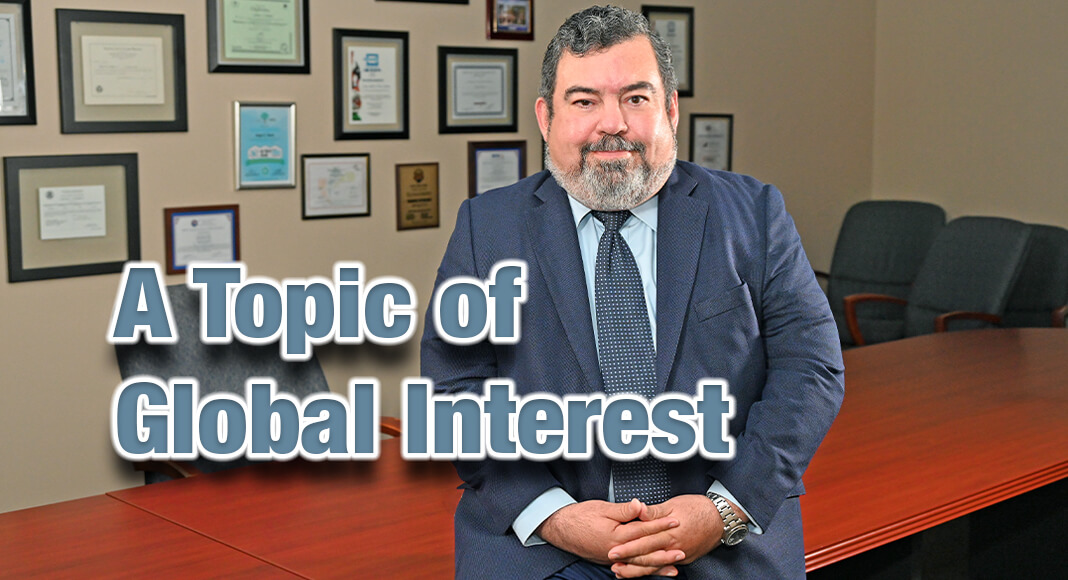
Texas Border Business
By Roberto Hugo González
With President-elect Donald Trump’s proposed tariff increases looming, businesses are grappling with protecting profitability and maintaining competitiveness. Policies such as universal tariffs ranging from 10% to 25% and sector-specific measures targeting imports from China, Canada, and Mexico are raising industry concerns. Against this backdrop, the duty drawback program has gained traction as a strategic tool to offset the impact of these tariffs.
The webinar “Trumped-Up Tariffs: Recover with Duty Drawback” brought together industry leaders to explore the nuances of duty drawback, a program enabling companies to recover up to 99% of duties paid on imported goods that are subsequently exported or destroyed. Participants included Scott Sorenson, CEO of CITTA Brokerage Company; Ken Staab, Global Logistics & Trade Compliance Manager at Genuine Parts Company (GPC); Jorge Torres, President of Interlink Trade Services; and Don McCormick, Chief Storyteller for CITTA Brokerage Company.
Scott Sorenson opened the discussion by framing the economic landscape. Citing $80 billion in import duties collected in 2023, Sorenson noted how sudden policy changes, like the 25% tariffs on steel imposed during Trump’s first term, demonstrated the volatility of the trade environment. “That’s how quickly things can change,” Sorenson said, highlighting the need for businesses to prepare for potential shocks.
Sorenson also emphasized the growing importance of duty drawback. “We know that around $1 billion was recovered through drawback claims in 2019, and that number is certainly higher now,” he observed. However, he acknowledged the complexity of filing these claims, referencing the 17,000-plus unique HTS classification codes that businesses must navigate. “This is where expert guidance becomes critical,” he stressed.
Ken Staab shared how Genuine Parts Company has been preparing for the anticipated tariff hikes. For GPC, the additional 25% tariffs on Chinese imports under Section 301 significantly increased costs, spurring the company to accelerate its duty drawback efforts. “We knew these tariffs weren’t going away, and in fact, they were likely to get more severe. It became all hands-on deck to ensure we could recover as much as possible,” Staab explained.
Staab outlined the challenges GPC faced when implementing a drawback program internally. “Every time we submitted something to customs, it came back with more questions. The process was cumbersome, and we didn’t have the expertise to address the nuanced requirements,” he said. Partnering with CITTA Brokerage allowed GPC to overcome these hurdles, leading to $3 million in recovered duties and ongoing monthly savings of $50,000.
Jorge Torres brought a wealth of knowledge on the intersection of duty drawback and cross-border trade, particularly within the U.S.-Mexico-Canada corridor. Torres highlighted the role of IMMEX programs, which allow manufacturers in Mexico to import raw materials duty-free for processing and subsequent export. “Many companies with maquiladora operations don’t realize they can pair these programs with duty drawback to maximize savings,” Torres said.
However, Torres cautioned that complexities like the “lesser of” rule under USMCA require careful planning. “If duties paid in Mexico are lower than those in the U.S., the drawback refund is limited to that lesser amount,” he explained. Torres also addressed potential trade disruptions, noting that President Trump could leverage provisions like Section 301 or the International Emergency Economic Powers Act (IEEPA) to impose tariffs on Mexican and Canadian imports. “The answer isn’t simple, but companies need to prepare for these possibilities,” he warned.
Don McCormick provided a broader perspective on the importance of strategic communication and collaboration in implementing drawback programs. “What stands out is how much money is being left on the table,” McCormick said, likening duty drawback to finding “hidden money” in a forgotten jacket pocket. He emphasized the importance of working with specialized partners to navigate the intricate documentation and compliance requirements.
McCormick also highlighted the role of storytelling in illustrating the tangible benefits of drawbacks. He shared how GPC’s experience demonstrated the potential for significant financial recovery, inspiring other companies to explore their eligibility. “This isn’t just about compliance; it’s about transforming how businesses approach tariffs and trade,” McCormick stated.
The webinar accentuated the value of duty drawback as both a financial lifeline and a strategic asset in navigating an uncertain trade environment. Sorenson emphasized the importance of exploring eligibility retroactively, as drawback allows claims for up to five years of past imports. Staab shared best practices for internal coordination, including engaging stakeholders and maintaining regular progress meetings. Torres stressed the need for companies to evaluate their trade policies comprehensively, leveraging tools like IMMEX, tariff provisions, and bonded warehouses in conjunction with drawback programs.
“Talk to your consultants, brokers, and trade experts,” Torres urged. “This isn’t just about mitigating tariffs—it’s about seizing opportunities in the face of challenges.”
As businesses await the details of President Trump’s trade policies, the message from the webinar was clear: the time to act is now. With proactive planning, expert guidance, and a commitment to compliance, companies can turn the looming tariff increases into an opportunity to optimize their operations and safeguard their bottom lines.

















